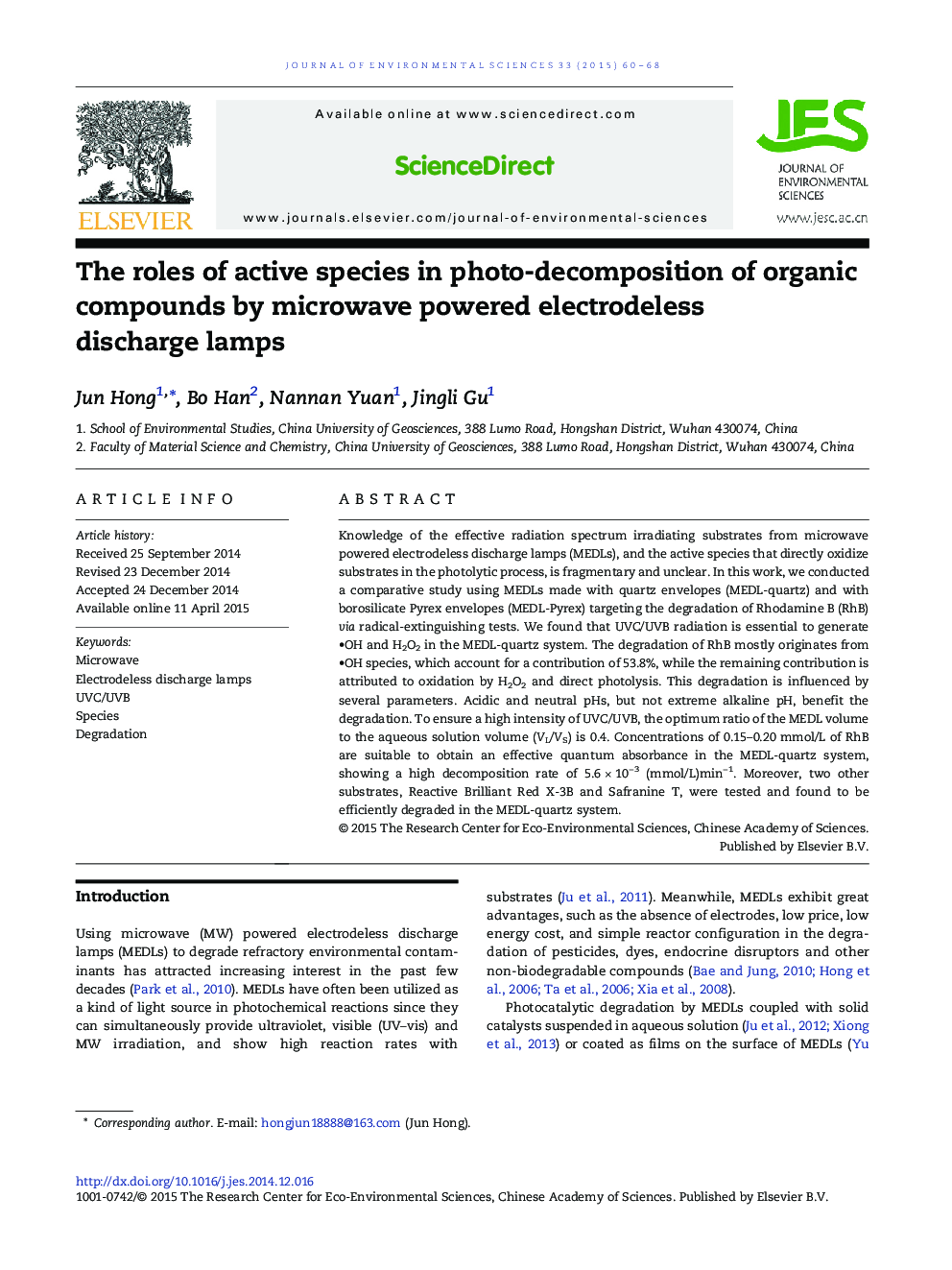| کد مقاله | کد نشریه | سال انتشار | مقاله انگلیسی | نسخه تمام متن |
|---|---|---|---|---|
| 4453977 | 1620820 | 2015 | 9 صفحه PDF | دانلود رایگان |
Knowledge of the effective radiation spectrum irradiating substrates from microwave powered electrodeless discharge lamps (MEDLs), and the active species that directly oxidize substrates in the photolytic process, is fragmentary and unclear. In this work, we conducted a comparative study using MEDLs made with quartz envelopes (MEDL-quartz) and with borosilicate Pyrex envelopes (MEDL-Pyrex) targeting the degradation of Rhodamine B (RhB) via radical-extinguishing tests. We found that UVC/UVB radiation is essential to generate
• OH and H2O2 in the MEDL-quartz system. The degradation of RhB mostly originates from
• OH species, which account for a contribution of 53.8%, while the remaining contribution is attributed to oxidation by H2O2 and direct photolysis. This degradation is influenced by several parameters. Acidic and neutral pHs, but not extreme alkaline pH, benefit the degradation. To ensure a high intensity of UVC/UVB, the optimum ratio of the MEDL volume to the aqueous solution volume (VL/VS) is 0.4. Concentrations of 0.15–0.20 mmol/L of RhB are suitable to obtain an effective quantum absorbance in the MEDL-quartz system, showing a high decomposition rate of 5.6 × 10− 3 (mmol/L)min− 1. Moreover, two other substrates, Reactive Brilliant Red X-3B and Safranine T, were tested and found to be efficiently degraded in the MEDL-quartz system.
Figure optionsDownload as PowerPoint slide
Journal: Journal of Environmental Sciences - Volume 33, 1 July 2015, Pages 60–68
